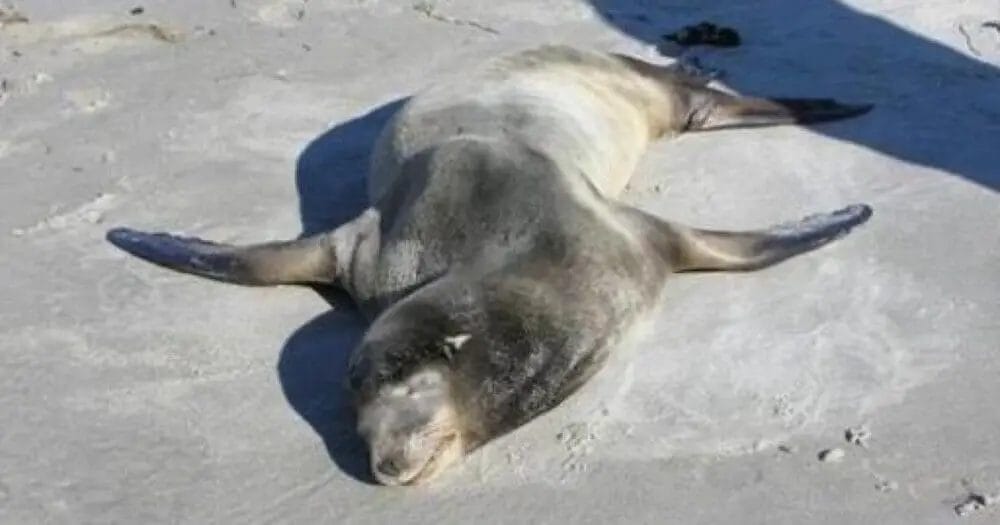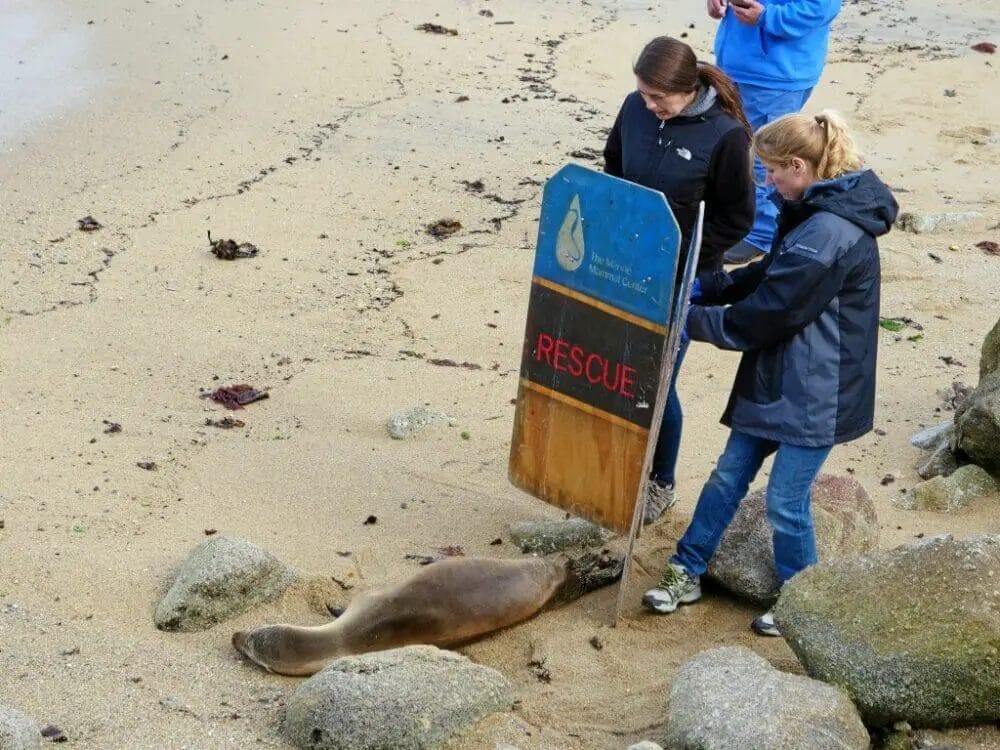There are several ways to help sea lions:
- Support conservation organizations that work to protect sea lion habitats and populations.
- Do not feed or approach sea lions in the wild, as this can disrupt their natural behaviors and put them at risk.
- Be mindful of marine pollution and support efforts to reduce it, as it can harm sea lions and other marine animals.
- Report any stranded or injured sea lions to local authorities so they can be rescued and cared for.
- Educate others about the importance of protecting sea lions and their habitats.
- Supporting sustainable fishing practices, as sea lions can be affected by overfishing which can lead to declines in their food sources.
- Lastly, always obey posted regulations and laws that protect sea lions and their habitats.

Introduction
Sea lions are a beloved and iconic species found along the coastlines of the Pacific Ocean. These charismatic marine mammals are known for their playful behavior and intelligence, but they also play important roles in their ocean ecosystems.
Unfortunately, sea lion populations and habitats are facing a number of threats, and it is crucial that we take action to protect them. This article will provide an overview of the threats facing sea lion populations, the conservation efforts being undertaken to protect them, and what individuals can do to help.
Threats to Sea Lion Populations
Habitat Loss and Degradation: Sea lion habitats, including breeding and haul-out sites, are threatened by a variety of human activities such as coastal development, oil and gas exploration and extraction, and pollution. These activities can degrade or destroy essential habitat, making it difficult for sea lions to find food, rest, and breed.
Pollution and Marine Debris: Sea lions are also threatened by pollution and marine debris, which can harm or kill them directly or indirectly. Pollution can contaminate their food sources, and marine debris can entangle or suffocate sea lions. Plastic ingestion is also a major problem for sea lions, which can cause serious health issues or even death.
Overfishing and Decline of Prey Populations: Overfishing and the decline of prey populations can also harm sea lions. Sea lions rely on fish and other marine animals for food, and when these populations are depleted, sea lions may struggle to find enough food to survive. This can lead to declines in sea lion populations and can also affect the populations of other animals that rely on the same prey species.
Climate Change and Sea Level Rise: Climate change and sea level rise also pose a threat to sea lion populations. Rising sea levels can flood and erode sea lion habitats, making it difficult for them to find suitable places to rest and breed. Climate change can also alter ocean temperatures and weather patterns, which can affect the distribution and abundance of sea lion prey.
Human Interactions and Disturbance: Human interactions and disturbance can also harm sea lion populations. Sea lions are often attracted to human-made structures, such as docks and marinas, as these can provide a convenient place to rest and haul out. However, when sea lions are disturbed or harassed, they may be driven away from these sites and may be less able to find sufficient food and rest.
Disease and Predation: Sea lions can also be affected by diseases and predation. Diseases such as leptospirosis and toxoplasmosis can infect sea lions and cause serious health problems. Sea lions are also preyed upon by animals such as sharks and orcas, and predation can lead to declines in sea lion populations.
As we can see, sea lions are facing multiple threats, and it is crucial that we take action to protect them. In the next section, we will discuss the various conservation efforts that are being undertaken to protect sea lion populations and habitats.

Conservation Efforts
Habitat Protection and Restoration: Conservation organizations and government agencies are working to protect and restore sea lion habitats. This can include designating protected areas, such as marine protected areas or critical habitat, and implementing measures to reduce or eliminate human activities that can harm habitats. Habitat restoration can also be done by removing debris and pollutants, and by reintroducing native plant and animal species.
Marine Pollution Reduction and Cleanup: Efforts are also being made to reduce marine pollution and cleanup existing pollution. This can include measures such as reducing the use of single-use plastics, promoting the use of more sustainable materials, and implementing stricter regulations on pollution from industries such as shipping and oil and gas. Cleanup efforts can involve removing debris from the ocean and coastlines, and treating or containing pollutants.
Sustainable Fishing Practices: Supporting sustainable fishing practices is also important for protecting sea lion populations. This can include implementing measures such as catch limits, seasonal closures, and gear restrictions to protect fish and other marine animals that sea lions rely on for food. It can also involve promoting and supporting sustainable fishing methods, such as using fishing gear that has less impact on the environment.
Research and Monitoring: Research and monitoring are also crucial for protecting sea lion populations. Studies can provide valuable information on sea lion population dynamics, habitat requirements, and the impacts of various threats. Monitoring can also help identify when populations are in decline and when conservation actions are needed.
Rescue and Rehabilitation: Rescue and rehabilitation of stranded and injured sea lions is also an important conservation effort. Stranded sea lions may be suffering from malnourishment, injuries, or disease, and rehabilitation can give them a chance to recover and be released back into the wild.
Education and Awareness Raising: Education and awareness raising can also play a key role in protecting sea lion populations. By educating people about the importance of sea lions, their role in ocean ecosystems, and the threats they face, we can help create a more informed and engaged public that is more likely to support conservation efforts.
What You Can Do to Help
Support conservation organizations: By supporting conservation organizations that work to protect sea lions and their habitats, you can help fund research, habitat protection, and other conservation efforts.
Do not feed or approach sea lions in the wild: Feeding or approaching sea lions in the wild can disrupt their natural behaviors and put them at risk. It is important to observe sea lions from a safe distance and to obey posted regulations and laws that protect sea lions and their habitats.
Reduce your own pollution and support efforts to reduce marine pollution: By reducing your own pollution and supporting efforts to reduce marine pollution, you can help protect sea lions and other marine animals from the harmful effects of pollution.
Report any stranded or injured sea lions: If you come across a stranded or injured sea lion, it is important to report it to local authorities so that it can be rescued and cared for.
Educate others about the importance of protecting sea lions: By educating others about the importance of protecting sea lions and their habitats, you can help raise awareness and support for conservation efforts.
Obey posted regulations and laws that protect sea lions and their habitats: It is important to obey posted regulations and laws that protect sea lions and their habitats, such as marine protected areas and critical habitat designations.
Support sustainable fishing practices: Supporting sustainable fishing practices can help protect the food sources of sea lions and other marine animals.

Conclusion
In conclusion, sea lions are facing multiple threats, and it is crucial that we take action to protect them. Conservation efforts such as habitat protection and restoration, marine pollution reduction and cleanup, sustainable fishing practices, research and monitoring, rescue and rehabilitation, and education and awareness raising are all important for protecting sea lion populations and habitats.
Additionally, individuals can also play a role in protecting sea lions by supporting conservation organizations, reducing their own pollution, reporting stranded or injured sea lions, obeying posted regulations and laws, and educating others about the importance of protecting sea lions.
By working together, we can ensure that sea lions continue to thrive in the wild for generations to come.
How can I tell the difference between a sea lion and a seal?
Sea lions and seals can be easily confused, but there are a few key differences to look for. Sea lions have external ear flaps, while seals do not. Sea lions also have larger front flippers that they can use to “walk” on land, while seals typically move on land by wriggling with their hind flippers. Sea lions also tend to be more vocal and active than seals.
Are sea lion populations declining?
Sea lion populations have experienced fluctuations over the years, with some populations increasing while others have decreased. For example, the California sea lion population has seen a significant increase in population over the last few decades, while the Guadalupe fur seal population has experienced a decline.
Factors such as habitat loss, pollution, overfishing, and disease can all contribute to population declines.
What can I do to help sea lions if I live far from the coast?
Even if you live far from the coast, you can still help sea lions by supporting conservation organizations, reducing your own pollution, and educating others about the importance of protecting sea lions and their habitats. You can also support sustainable fishing practices, which can help protect the food sources of sea lions and other marine animals.
Can I feed sea lions or approach them in the wild?
It is not recommended to feed sea lions or approach them in the wild, as this can disrupt their natural behaviors and put them at risk. It is important to observe sea lions from a safe distance and obey posted regulations and laws that protect sea lions and their habitats.
